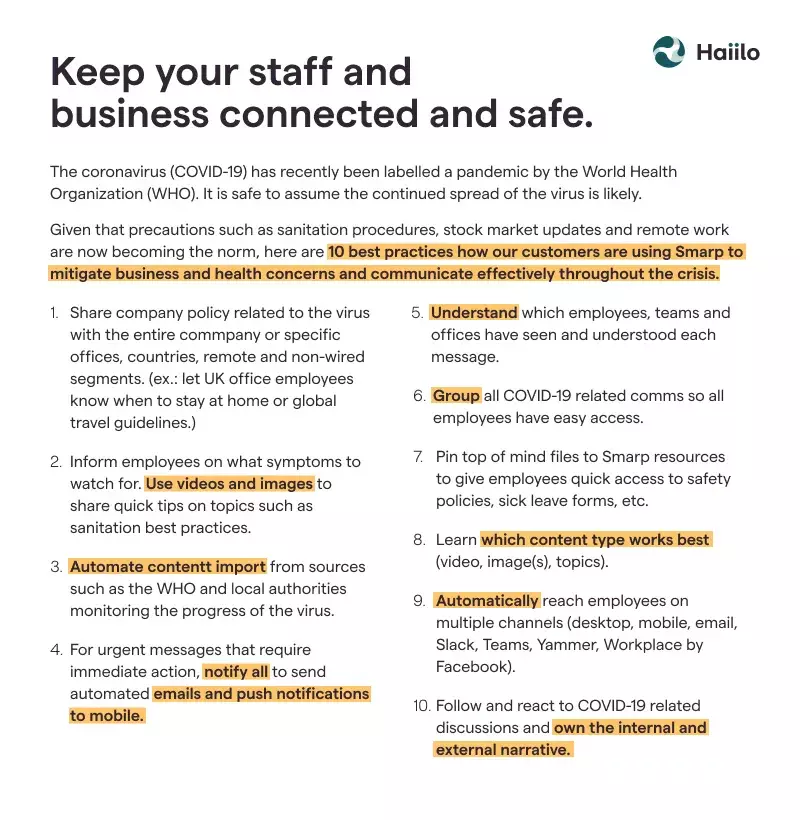Business continuity is probably one of the most important concerns employers have in these unprecedented times. This is not surprising as organizations are challenged with constant and unprecedented changes during the pandemic.
📚Download the eBook “10 Principles of Modern Employee Communications” and learn how to communicate with the modern employee in today’s digital age.
Employee communications play an extremely important role in creating a workplace atmosphere that drives a positive employee experience and support teams’ productivity.
In this blog, we will go over some of the best workplace communications practices that can help you plan for business continuity in a COVID-19 world.
What Is Business Continuity (BC) and Why Is Everyone Talking About It?
Many organizations — from startups to large enterprises — have a business continuity strategy with a set of actions they’re ready to take to deal with difficult and unexpected situations.
In a nutshell, business continuity is an organization’s ability to maintain essential functions during and after a disaster occurs.
Many people think a disaster recovery (DR) plan is the same as a business continuity plan. However, a DR plan focuses mainly on restoring an IT infrastructure and operations after a crisis. It’s actually just one part of a complete business continuity plan. BC plan looks at the continuity of the entire organization.

Having a business continuity strategy in place is critical to any company’s success. It is the only way to ensure that organizations can continue to function with as little disruption as possible when an unexpected situation occurs.
With the current pandemic, the popularity of topics around business continuity has increased exponentially. Organizations across the world are looking for ways to better manage their operations in order to mitigate the consequences of the crisis and keep their businesses running as smoothly as possible.

How COVID-19 Is Changing Business Continuity Strategies
Many enterprises are now highly vulnerable to the negative impacts of the COVID-19 crisis. To protect themselves from being severely impacted, their first plan of action should be to identify whether they are most vulnerable to internal or external threats and take measures to reduce the impacts of COVID-19 on their activities.
More than ever before, we see organizations taking actions to increase their crisis preparedness. In order to establish their business continuity plan, employers first need to understand all the threats and be able to prioritize the actions they are about to take accordingly.
The International Labour Organization has categorized the 4 important elements that companies need to evaluate when preparing a business continuity plan. They are called the 4 Ps:
- People: lives of workers and family members
- Processes: enterprise operations
- Profits: revenue generation
- Partnerships: enabling environment to carry out business operations
Note that people come first!
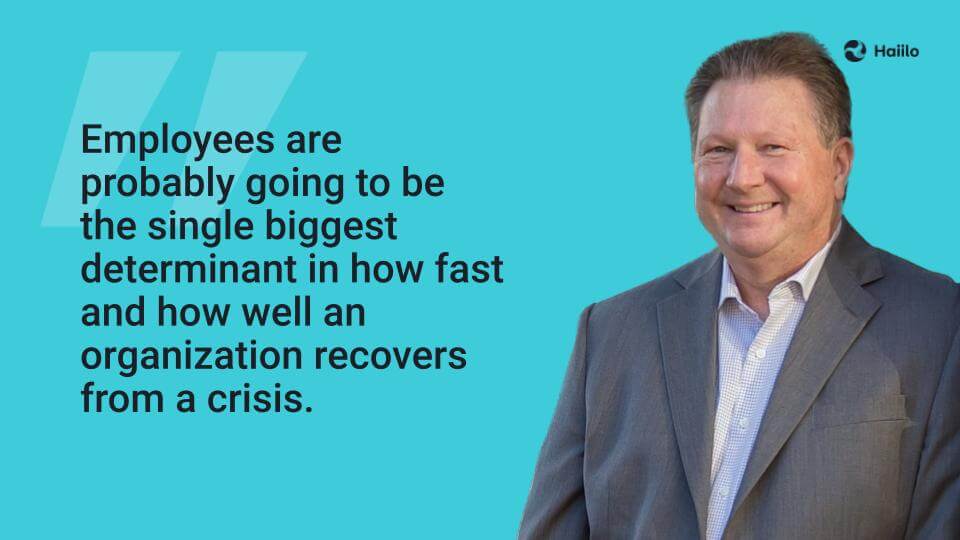
While, in the past, organizations might have been mostly focused on their profits, this crisis is certainly driving the shift towards employee-centric workplaces.
Because the safety and wellbeing of the employees in the workplace are essential, Human Capital Management has been completely disrupted.
People are looking for guidance from their employers, community and leaders to cope with all the changes they have to cope with. Addressing their concerns in an open and transparent manner will go a long way towards building trust and ensuring business continuity.
You Internal Communication is the Key to Your Business Continuity Plan
One of the main adjustments companies have to make now is to expand flexible work arrangements and other policies that allow people to work remotely and safely. Companies are now reorganizing their teams and policies that create safe working environments and drive a positive employee experience.
In order to achieve that, employers are investing in their employee communications efforts more than ever before. They are delivering real-time communications that are aligned with the current government and health authorities’ policies. Such approach is helping employees adjust to change and maintain their productivity levels during the crisis.
In a study by IBM, it was found that business continuity professionals thought that only 60% of employees would know what to do during a crisis. However, by leveraging newer plan distribution and emergency communications techniques, your organization can be better equipped to thrive through any crisis.
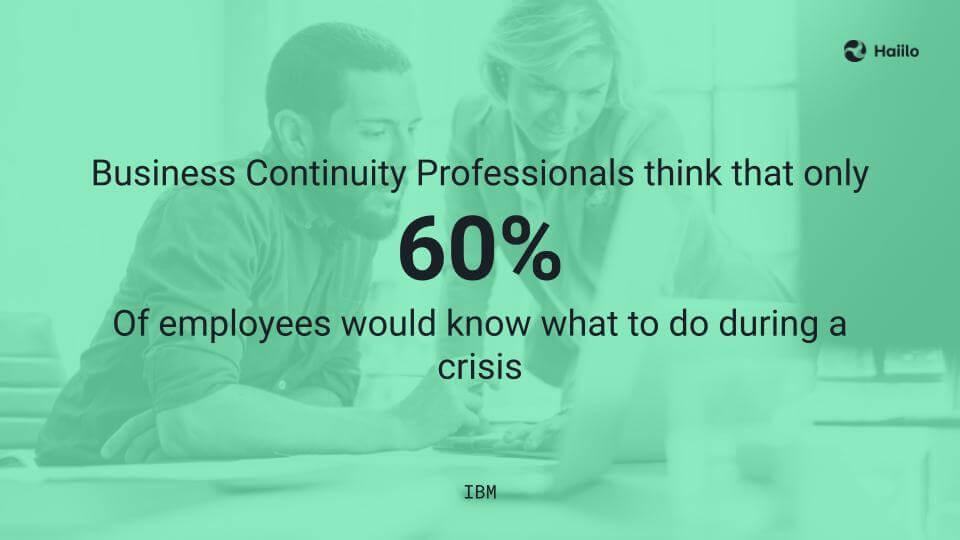
Today, a growing number of organizations have incorporated mobile communication technology into their business continuity planning. This enables them to reach their employees and other stakeholders through their smartphones or tablets.
This way, all business continuity planning information, such as contact lists, company and government updates, protocol files and maps, are available to the employees under one central communication platform, at any time.
Such technology enables crisis response teams to send alerts and updates in real time, as the crisis unfolds, which helps to protect individuals from dangerous situations, direct them to safety and streamline crisis response.
When critical information is instantly shared with all employees, the company is able to return to business as usual more quickly and more effectively.
In addition to communicating with remote workers, communication with deskless and front-line employees has become a top priority for most businesses. Reaching out to them in a timely manner and making sure that they have access to all the important company updates is an important factor of business continuity planning. It goes without saying that your internal communication team plays a critical role in planning for business continuity.
8 Ways to Ensure Business Continuity with Proper Internal Communications
A company’s business continuity strategy must enable employees to stay productive while working from home and provide the means for better team collaboration and communication in times of crisis.
It is imperative that leaders, IC and HR departments lead the way in driving the “people-first” approach to your business’ continuity plan. People, your most valuable assets, should be treated as such, and addressing the “human” side of your business continuity plan is critical.
Only with proper communication you can align your employees with your business goals and strategy during a crisis such as COVID-19. Let’s see how:
1. Share Governments’ COVID-19 measures with your employees in no time
In order to properly plan for business continuity, organizations need to ensure the right flow of critical information in the workplace.
Currently, there is an extensive overload of COVID-19 related information. Such information overload negatively influences your business and employee productivity. Naturally, your employees may not be aware of the trustworthiness of such information and they may not even be following the most appropriate and accurate instructions.
You, as an employer, need to make sure that your entire workplace has an easy and instant access to all the important and correct information coming from Governments and local authorities.
Therefore, employers play a critical role in helping employees to find the right information about the pandemic. However, employees expect such information to find them, not the other way around.
You need to keep an eye on the latest updates and information coming from Governments and other trustworthy sources such as the World Health Organization (WHO), the Center for Disease Control and Prevention and the American Medical Association and instantly communicate them to your employees.
However, sharing such information with employees in a timely manner is not that easy, especially within large organizations. So make sure you use an employee communications solution that enables you to automatically import such updates so you can easily share them with your employees.
2. Inform your employees about any impacts COVID-19 may have on the business
Transparency and trust… this is what employees expect from their employers right now. Therefore, IC professionals and leaders are now taking a big role in building trust in the workplaces.
You can’t leave your employees in the dark if you want to ensure your company’s business continuity. Instead, you need to make sure that they are well-informed about the consequences the crisis is bringing to the business.
Uncertainty among employees around their job security is in its peak right now, causing fear and concerns. This exactly the reason why we’ve been talking so much about employee wellbeing lately.
To stop this from happening and to try to keep the workplace atmosphere positive and healthy, leaders and C-level executives need to take a step forward and engage more with their employees.
3. Communicate safety tips to your employees in a timely manner
Employee safety is of utmost importance right now, so your business continuity plan must include a strategy to confirm the safety of all employees as a crucial first step.
However, traditional forms of communication may not be that efficient to connect with your employees. Emails, for example, often get neglected by employees. Therefore, this communication channel is not an effective way to communicate with your employees during a crisis.
Instead, employers are looking for solutions that include emergency notification systems for employees. Such employee communication platforms enable the flexibility of mobile and smart technology to ensure timely message delivery to remote, deskless and in-office employees.
4. Share the right updates with the right employees
It is clear that organizations need a business continuity plan to recover from the threats they may encounter. But it is not enough to simply create a plan and then store it on a shelf where no one can make full use of it.
Yes, regular and timely information flow is critical during a crisis such as COVID-19. However, that does not mean that every employee should get the same message no matter what they do or where they are located.

So, if you want your employees to read your updates and engage with the content you’re sharing with them, you need to do your best to make it personal and relevant to them. Otherwise, there is a big chance that employees will start ignoring your messages even when they are intended for them.
In such situation, there is a high risk that employees will miss out on the important information they need which may seriously hurt your business continuity plan and ability to recover form the crisis.
5. Make it easy for your employees to ask any questions they may have
Communication is not a one-way street. Communication in the workplace includes top-down, bottom-up and peer-to-peer to communications. During a crisis, it is very important to keep these pathways of internal communication open, and encourage employees to share their thoughts.
Let your employees express how they feel, voice concerns, ask questions and let them suggest solutions. This is a great way to create a sense of unity and team spirit. What’s more, keep in mind that your employees can also come up with innovative solutions to overcome business challenges you are facing during COVID-19.
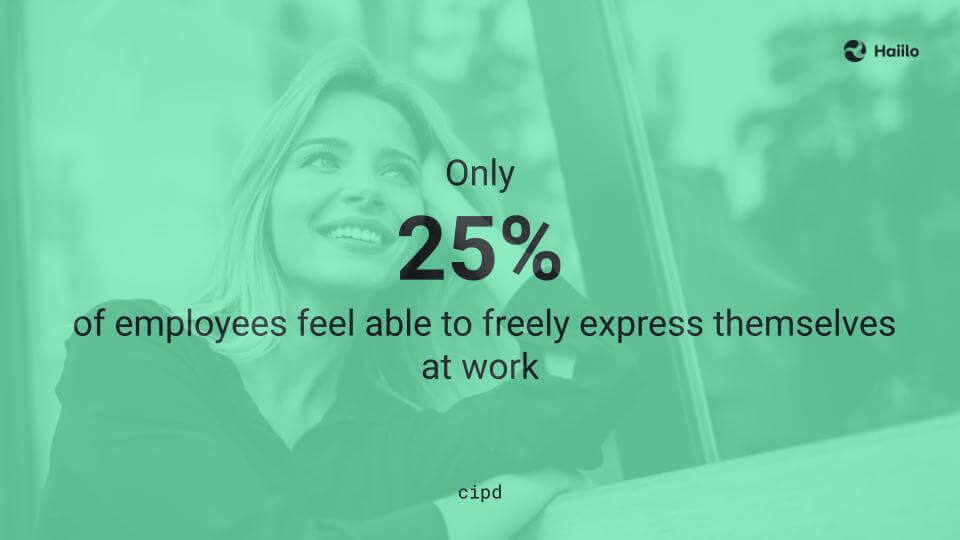
With the new remote work arrangements, many employees are struggling to balance their personal and professional lives, and they need their employers’ support.
The best way to do so is by enabling employees to share their voice and encouraging managers to build stronger connections with their teams by communicating honestly, openly and regularly.
Unfortunately, within many large companies, communication goes one-way most of the time. Meaning, employees just get a newsletter with important company updates. This approach is not only inefficient as the information is likely to get lost, but it also doesn’t allow employees to engage in daily company conversations. Additionally, it hurts the company’s reputation and ability to build trust in the workplace.
6. Make sure your communication strategy fosters collaboration among remote teams
With the rapid increase of remote work, collaboration in the workplace has become one of the main pain points for many organizations since the beginning of the COVID-19 outbreak. Therefore, enabling employee collaboration during a crisis should be an important part of every business continuity strategy.
Employers need to build cultures and implement technology solutions that foster and ease collaboration between remote teams. In order to achieve that, communication during crisis needs to be more frequent, transparent and open to everyone.
Additionally, leaders need to take a bigger role in internal communications in order to drive and support a culture of collaboration.
7. Align your internal and external messages
Appointing key personnel to handle external and internal communications during an emergency is paramount. Sample of media statements and important company updates should be documented in the company’s business continuity plan in a way that is easily customizable and accessible to your employees.
However, aligning those two channels of communication is crucial. As employees have access to both, they need to see that your messages are consistent. Otherwise, you can create confusion and mistrust among your employees.
In order to make internal and external messages easily accessible to their workforce, many employers are now implementing modern employee communication platforms that enable them to streamline the information flow within their organizations and make internal and external communication more consistent.
8. Measure your communication efforts and plan for recovery now
Unfortunately, many organizations don’t have a solid business continuity plan. As long as there is no crisis, planning for recovery may not be a business priority.
However, this crisis has taught us that having a clear business continuity plan for various types of crisis is absolutely worth it. Moreover, the ones that do have it are much more likely to recover from the crisis with fewer negative consequences.
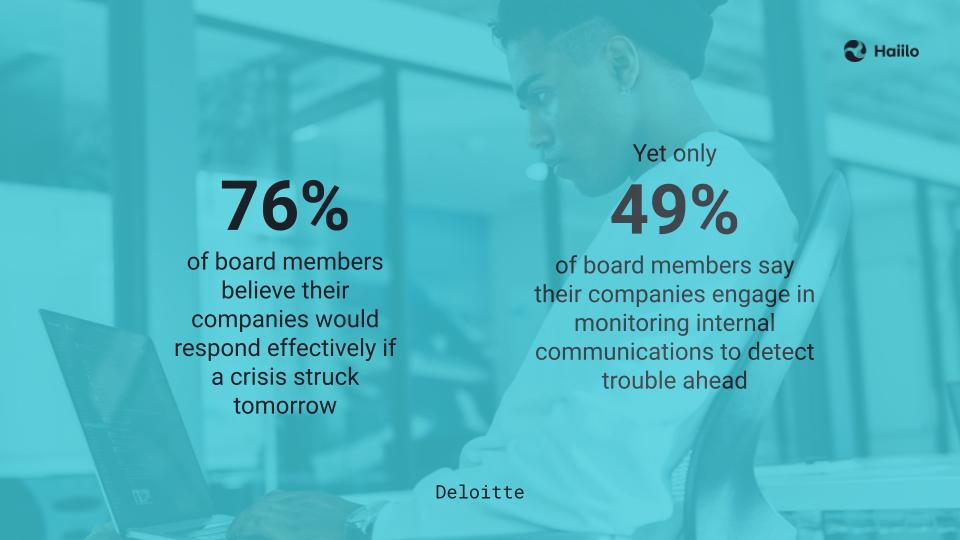
In order to plan for recovery and create proper business continuity plans, employers first need to understand the role of internal comms in it. The ability to track and measure internal communications in the workplace makes it much easier to manage a crisis and spot potential future disruptions. If you haven’t already started, now is the time to plan for recovery!
The Consequences of Not Having a Business Continuity Plan (BCP)
During these chaotic times, many organizations have become aware of the negative sides of neglecting business continuity planning.
The current pandemic, however, is a wake-up call for all those organizations that haven’t put much effort in business continuity planning earlier.
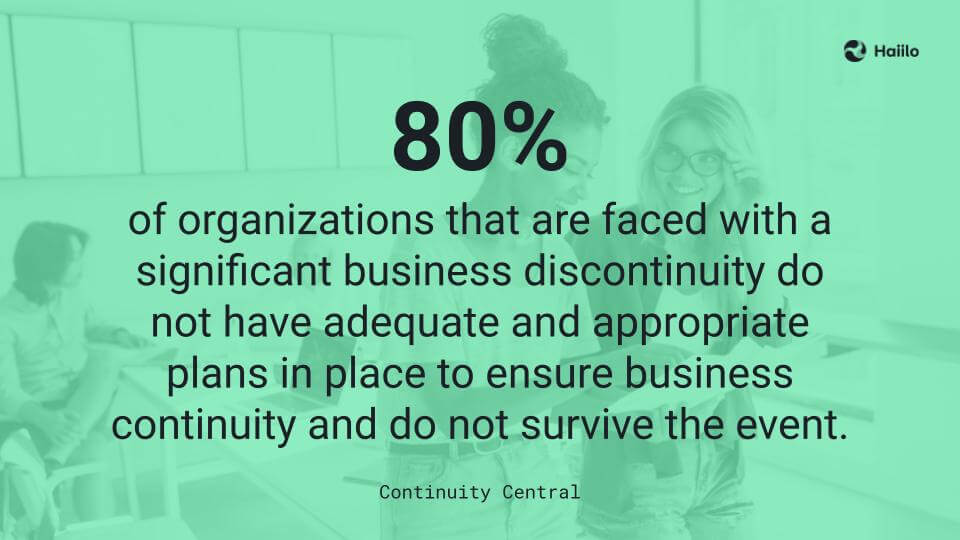
Depending on the crisis, there are many different consequences businesses may suffer from. However, this current pandemic seems to have the most negative effect on 3 main business factors:
Financial loss
Financial loss is probably the biggest consequence of a lack of a business continuity plan. The cost of a business interruption varies from $5.8 million due to fire or explosion or $4.4 million due to a storm, to 0.55 million in water damages.
Even though it is too early to tell what will be the final financial loss caused by COVID-19, we all know that the consequences will be significant.
The longer the downtime is, the higher the losses. Therefore, having a business continuity plan can help reduce downtime and improve recovery time.
Reputation
Reputation is another business factor affected by the current pandemic. Therefore, if you don’t have a clear internal and external communications strategy as a part of your business continuity plan, your reputation will be damaged.
Corporate and social responsibility, as well as proper communication with stakeholders from within and outside the company, are the best ways to mitigate the consequences of the crisis on your company’s reputation.
Remember, the way a company responds to a crisis can make or break its reputation for many years to come.
Employees’ health and well-being
The current pandemic is a specific type of crisis as it directly impacts your employees’ health and well-being. Even though many organizations may have not considered such impact when writing their business continuity plans, now they certainly will.
The ones that did, however, are now in a much better place as they are able to continue to motivate and engage their people and, therefore, keep their business operations running as smoothly as possible.
In the future, we expect to see many businesses updating their business continuity plans in which employees will be considered as the most important stakeholders in crisis recovery.
How Haiilo Can Help You Ensure Business Continuity
Employers across the world use Haiilo to keep their employees informed and engaged during the COVID-19 crisis. Therefore, our employee communications technology is enabling employers to better plan and manage their business continuity strategies.
Haiilo users have realized early on about the importance of internal communication during a crisis.
This is how they use Haiilo to boost employee engagement, collaboration and productivity and to continuously inform their employees about urgent crisis-related updates.
